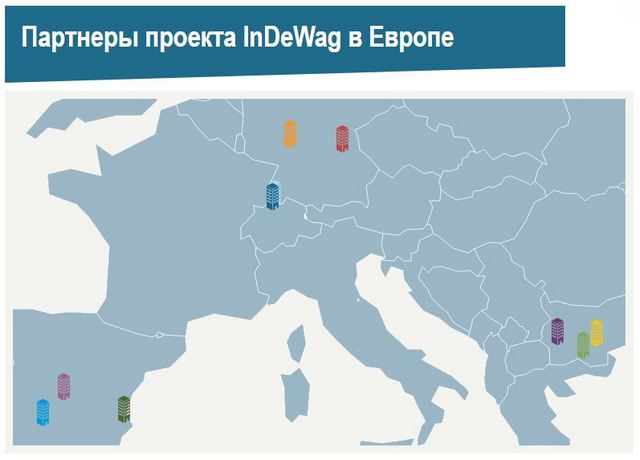Господдержка предприятий-производителей строительных материалов

The building, like a glass cube, an aquarium or a greenhouse - in fact, an experimental pavilion Here in Sofia, scientists are exploring the potential of energy-saving technologies and starting with rethinking the concept of a window.
It seems that the windows of the pavilion are completely ordinary. In fact, they are filled with a mixture of 70 liters of distilled water and 30 liters of ethylene glycol, used as antifreeze. The water mixture circulates around the perimeter of the room. Each window panel can also act as a solar collector. The windows are equipped with solar panels, additional sources of accumulation of natural energy from the outside. Scientists direct its surplus to heat the building and reserve it for later.
Physicist Miglen Nikolavea-Dimitrova explains: "The advantage of using liquid instead of air in the glass cavity of the window is associated with a higher density of water, it can absorb infrared light over a wider range."
Scientists, united by the European research project IndeWag, are working on new solutions within the walls of the pavilion. For example, they constantly monitor the level of temperature and humidity: this allows you to calculate how new windows will maintain heat in different rooms and in different climatic conditions.
Technologist Kiimir Zhivachek explains: “We measure the temperature inside the windows, take measurements every 20 centimeters, starting from the floor and so rising upward. This gives us an idea of how the window distributes heat. We compare what we put between the frames with energy output. "

The technology introduced in the pavilion in Sofia was developed in Madrid. Researchers are talking about an intelligent glazing system. They ensure that the liquid placed in the glass box acts as a self-regulating insulator.
Professor Juan Antonio Hernandez Ramos comments: “If it is too cold outside, we can stop the movement of water. So the sun will warm up the opening chamber in the window faster, the glass will begin to give off heat. If it is hot outside, we can activate the movement of water in other parts of the building "Heat will not be concentrated at only one point. Our windows are similar to the skin of a person - the same ability to thermoregulate."
Scientists believe that over time this technology will allow the construction of buildings with almost zero energy consumption, which meets the EU’s goal of improving energy efficiency in the construction sector.
Architect Belen Moreno Santamaria explains: “Our task is to learn how to build buildings that consume minimal energy from the outside, but are able to produce it themselves, give heat to the premises. This solution just meets the stated task. We optimize the energy exchange between the building elements, which, in essence every home needs. "
The next stage is the development of technology on a larger industrial scale.
Professor Dieter Bruggeman is convinced: "Everything is ready to bring the product to the market. We have to observe how the technology will work on a larger industrial scale. The experiments in small pavilions have been successful. We believe that our solution is suitable for equipping large buildings."
The project needs investment support. In anticipation of financial partners, scientists in the experimental pavilion of Sofia will continue measurements and observations.
Source: https://ru.euronews.com/